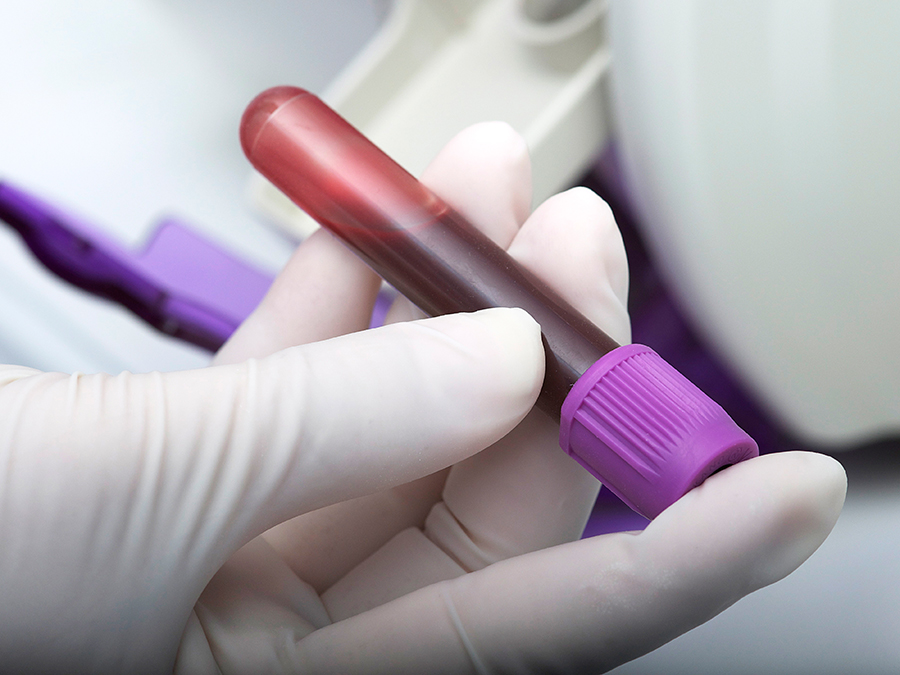New test could avoid unnecessary examinations in head injury cases
A blood test instead of a brain scan

Accidents that cause injury to the head often result in traumatic brain injury. Such injuries can be relatively harmless, for example in the case of a concussion. In other cases, where large volumes of blood exert pressure on the brain, they can be life-threatening and require immediate surgery. Doctors often must decide, after an accident, whether a detailed examination by CT scan is needed.
A new blood test could facilitate this decision. The method was developed and tested by an international team that includes Prof. Peter Biberthaler, Director of the Department of Trauma Surgery at university hospital Klinikum rechts der Isar of the TUM, who played a key role as lead author. “Using this method, we tested blood for the presence of two biomarkers, the proteins UCH-L1 and GFAP,” Peter Biberthaler explains. "Depending on their levels in the blood, we were able to predict whether hemorrhaging in the brain had occurred." Dr. Viktoria Bogner-Flatz of the General, Trauma and Reconstructive Surgery Unit of the Hospital of Ludwig-Maximilians-University Munich was also involved in the study and the publication.
Successful in 99.6% of cases studied
The standard method for determining if a CT scan is necessary comprises a series of tests resulting in a score on the Glasgow Coma Scale. This method assesses, for example, whether an accident victim can open their eyes independently and respond to questions. The maximum score for an adult is 15. Clinical guidelines in several countries require that a CT scan be performed on all patients with a score below 15.
The recent study tested blood serum samples from more than 1900 patients in accident and emergency rooms in the US and Europe. The vast majority of patients had little or no impairment according to the Glasgow Coma Scale. All the subjects underwent both the new blood test and a routine CT scan.
For all 671 study participants for who the blood test result was negative, the result was confirmed by CT scan: no injuries were detectable. It was found that the test was able to make a reliable prediction in 99.6% of these cases. Moreover, all the patients whose CT showed severe injury also had a positive blood test result. The doctors involved in the study also suspect that the test is highly sensitive to minor injuries as well and can detect very mild bleeding that does not show up on CT scans. The authors believe that this explains why around two-thirds of the patients with a positive blood test result showed no visible injuries in their CT scan.
Prospects
CT scans are not only expensive but also involve exposure to X-rays. "Of course, both are better than taking risks," says Peter Biberthaler. "But if you can avoid an unnecessary test, everyone benefits. Many people with mild head trauma and scores below 15 on the Glasgow Coma Scale show no bleeding on the CT. " Dr. Jeffrey Bazarian of the University of Rochester and Prof. Biberthaler are the lead authors of the paper that was published in Lancet Neurology. He believes that significant savings can potentially be made if the method is adopted in routine clinical practice: "Our results suggest that the number of CT scans for suspected head trauma could be reduced by about a third."
Publication:
Jeffrey J. Bazarian, Peter Biberthaler, Robert D. Welch, Lawrence M. Lewis, Pal Barzo, Viktoria Bogner-Flatz, P. Gunnar Brolinson, Andras Büki, James Y. Chen, Robert H. Christenson, Dallas Hack, J. Stephen Huff, Sandeep Johar, J. Dedrick Jordan, Bernd A. Leidel, Tobias Lindner, Elizabeth Ludington, David O. Okonkwo, Joseph Ornato, W. Frank Peacock, Kara Schmidt, Joseph A. Tyndall, Arastoo Vossough, Andy S. Jagoda, Serum GFAP and UCH-L1 for prediction of absence of intracranial injuries on head CT (ALERT-TBI): a multicentre observational study, Lancet Neurology, July 24, 2018, DOI: 10.1016/S1474-4422(18)30231-X
More information:
- Profile of Professor Peter Biberthaler
- Department of Trauma Surgery Klinikum rechts der Isar TUM (in German only)
Contact:
Prof. Dr. Peter Biberthaler
Technical University of Munich
Chair for Trauma Surgery
Director of the Department of Trauma Surgery Klinikum rechts der Isar TUM
Tel: +49 89 4140 2126
peter.biberthaler@mri.tum.de
Technical University of Munich
Corporate Communications Center
- Paul Hellmich / Vera Siegler
- paul.hellmich@tum.de
- presse@tum.de
- Teamwebsite